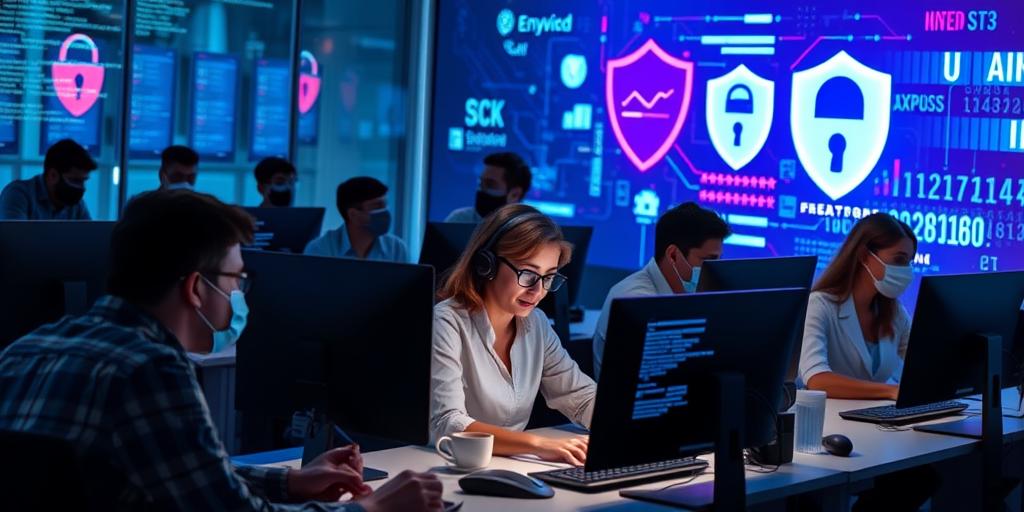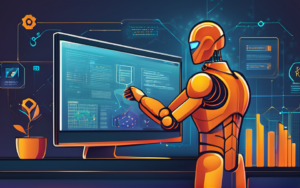In today’s digital landscape, cybersecurity is paramount, but implementing robust security measures can sometimes feel like a balancing act. While safeguarding sensitive data and protecting against cyber threats is essential, it’s crucial to consider how these measures might impact employee productivity. This post explores the complex relationship between cybersecurity and employee productivity, examining data-driven insights and outlining best practices to ensure a secure and efficient work environment.
Cybersecurity Measures and Employee Productivity: A Complex Relationship
The impact of cybersecurity on employee productivity is often a double-edged sword. On one hand, stringent security measures can help prevent data breaches and protect sensitive information, creating a secure environment for employees to work in. On the other hand, overly complex or cumbersome security processes can lead to frustration, slow down workflows, and ultimately hinder productivity.
The Impact of Cybersecurity on Employee Productivity
It’s important to recognize that the impact of cybersecurity on employee productivity can vary significantly depending on the specific measures implemented and the nature of the organization. For instance, requiring employees to use strong passwords and multi-factor authentication can be effective in preventing unauthorized access, but if not implemented thoughtfully, it can also lead to user frustration and increased time spent logging in. Similarly, frequent security updates and patches are necessary to maintain system security, but they can also cause temporary disruptions in work processes.
Understanding the Trade-offs
Striking a balance between security and productivity requires careful consideration of the potential trade-offs. It’s crucial to identify the areas where security measures might be hindering productivity and explore alternative approaches that minimize these negative impacts. For example, implementing single sign-on (SSO) can streamline the login process, reducing time spent entering credentials and improving user experience. Similarly, providing employees with clear and concise security policies can enhance understanding and reduce confusion, leading to more efficient security practices.
Data-Driven Insights: Examining the Evidence
To better understand the relationship between cybersecurity and employee productivity, it’s helpful to examine data from relevant studies. Several research projects have shed light on specific security measures and their impact on user experience and productivity.
Study 1: The Impact of Password Complexity on User Frustration
A study conducted by researchers at the University of California, Berkeley, found a strong correlation between password complexity requirements and user frustration. The study revealed that users with complex password requirements were more likely to forget their passwords, leading to increased help desk calls and wasted time. This emphasizes the importance of finding a balance between password security and user experience.
Study 2: The Correlation Between Security Training and Employee Efficiency
Another study, published in the Journal of Information Security, investigated the relationship between security training and employee efficiency. The study found that employees who received regular security training were better equipped to identify and mitigate security risks, resulting in fewer security incidents and improved productivity. This highlights the importance of investing in comprehensive security training programs for employees.
Study 3: The Influence of Multi-Factor Authentication on User Experience
A study by the National Institute of Standards and Technology (NIST) examined the impact of multi-factor authentication (MFA) on user experience. The study found that while MFA can significantly enhance security, it can also increase the time and effort required to log in, potentially leading to user frustration. The study suggests that organizations should consider implementing MFA in a way that minimizes user inconvenience, such as offering multiple authentication options and providing clear instructions.
Balancing Security and Productivity: Best Practices
By implementing best practices, organizations can effectively balance cybersecurity and productivity, creating a secure and efficient work environment.
Streamlining Security Processes
Simplifying security processes is crucial for enhancing productivity. This can involve streamlining password requirements, implementing single sign-on, and providing clear and concise security guidelines. Organizations can also consider using security tools and automation to reduce manual tasks and free up employees’ time.
Investing in User-Friendly Technology
Investing in user-friendly security technology is essential for minimizing friction and enhancing user experience. This includes selecting security solutions that are intuitive, easy to use, and integrate seamlessly with existing workflows. Organizations should also consider providing employees with technical support and resources to help them navigate security measures effectively.
Promoting Cybersecurity Awareness and Training
Regular cybersecurity awareness training is essential for empowering employees to play an active role in protecting organizational data. Training programs should cover topics such as phishing scams, password security, and data handling best practices. Organizations should also encourage employees to report any suspicious activity or potential security breaches promptly.
A Future-Proof Approach to Cybersecurity
As technology continues to evolve and cyber threats become more sophisticated, organizations must adopt a future-proof approach to cybersecurity. This involves a continuous commitment to improving security practices, embracing emerging technologies, and fostering a culture of collaboration and communication.
The Importance of Continuous Improvement
Cybersecurity is not a one-time event but an ongoing process. Organizations should regularly assess their security posture, identify vulnerabilities, and implement appropriate countermeasures. They should also stay updated on emerging threats and vulnerabilities and adjust their security practices accordingly.
Embracing Technology for Enhanced Security and Productivity
New technologies such as artificial intelligence (AI) and machine learning (ML) can play a significant role in enhancing cybersecurity and productivity. AI-powered security solutions can automate threat detection, incident response, and vulnerability assessments, freeing up security professionals to focus on more strategic tasks. ML algorithms can be used to analyze user behavior and identify potential threats, further enhancing security without compromising productivity.
The Role of Collaboration and Communication
Effective cybersecurity requires collaboration and communication among all stakeholders, including employees, IT professionals, and management. Open communication channels should be established to facilitate the sharing of security information, best practices, and incident reports. Organizations should also encourage employees to participate in security awareness initiatives and provide feedback on security measures.
By following these best practices and embracing a future-proof approach to cybersecurity, organizations can create a secure and productive work environment, safeguarding sensitive data while empowering employees to perform at their best.




